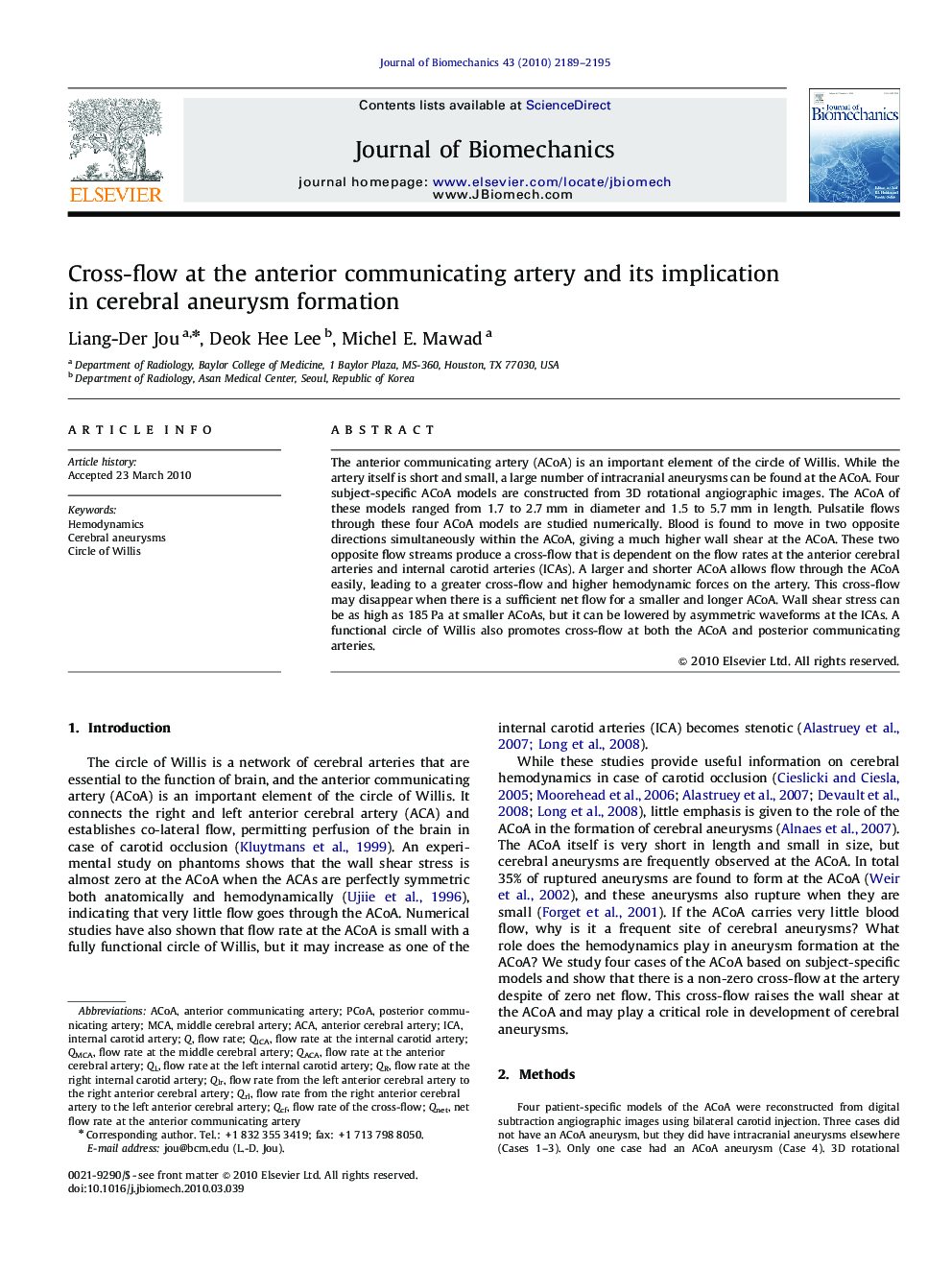| Article ID | Journal | Published Year | Pages | File Type |
|---|---|---|---|---|
| 873738 | Journal of Biomechanics | 2010 | 7 Pages |
The anterior communicating artery (ACoA) is an important element of the circle of Willis. While the artery itself is short and small, a large number of intracranial aneurysms can be found at the ACoA. Four subject-specific ACoA models are constructed from 3D rotational angiographic images. The ACoA of these models ranged from 1.7 to 2.7 mm in diameter and 1.5 to 5.7 mm in length. Pulsatile flows through these four ACoA models are studied numerically. Blood is found to move in two opposite directions simultaneously within the ACoA, giving a much higher wall shear at the ACoA. These two opposite flow streams produce a cross-flow that is dependent on the flow rates at the anterior cerebral arteries and internal carotid arteries (ICAs). A larger and shorter ACoA allows flow through the ACoA easily, leading to a greater cross-flow and higher hemodynamic forces on the artery. This cross-flow may disappear when there is a sufficient net flow for a smaller and longer ACoA. Wall shear stress can be as high as 185 Pa at smaller ACoAs, but it can be lowered by asymmetric waveforms at the ICAs. A functional circle of Willis also promotes cross-flow at both the ACoA and posterior communicating arteries.
